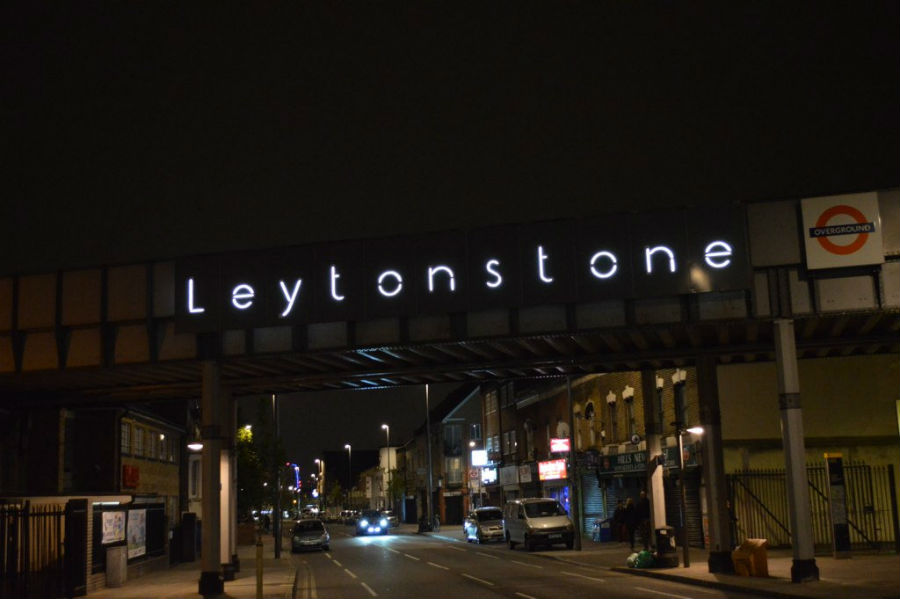Following the stabbing at Leytonstone tube station in London last Friday, social media again took a central role in disseminating information and sharing public sentiment. The hashtag #youaintnomuslimbruv was at the heart of the online response, around which people united in their condemnation of the attack, apparently building an online community that rejected such behaviour and the ideologies that are seen to underpin it.
As well as enabling people to align themselves with a particular viewpoint or belief towards current affairs, hashtags have become markers of emphasis – a little like exclamation marks added to the end of a slogan. This dual capacity to link your tweet to other tweets through an emphatic slogan or phrase has been interpreted as a “rallying cry” (as in Michelle Obama’s use of #bringbackourgirls) or a means of signalling affiliation with a particular cause (such as the #notinmyname campaign).
The Leytonstone hashtag originated not in a boardroom, as is common, but as a bystander’s spontaneous response to the attacker. It was what Guardian columnist Remona Aly called “the voice of defiant unity”.
 A linguistic perspective can help us understand what makes this particular hashtag so powerful in signifying solidarity against terrorist acts (which this incident initially was thought to be). All aspects of the language (pronunciation, grammar, vocabulary) do more than communicate a “basic” meaning. They are used by the speaker to construct his own identity, that of the attacker, and the relationship between them. Using the negative (“not a Muslim”) presupposes that the attacker has constructed himself as a Muslim, an identity the speaker challenges. Using the marker of solidarity “bruv” and the so-called double negative (“ain’t no”) constructs speaker and attacker as members of a shared community. In other words, the simple sentence constructs both alignment (“we are the same”) and distance (“we are opposed to each other”). The opposition is the more powerful for coming from a position of shared community.
A linguistic perspective can help us understand what makes this particular hashtag so powerful in signifying solidarity against terrorist acts (which this incident initially was thought to be). All aspects of the language (pronunciation, grammar, vocabulary) do more than communicate a “basic” meaning. They are used by the speaker to construct his own identity, that of the attacker, and the relationship between them. Using the negative (“not a Muslim”) presupposes that the attacker has constructed himself as a Muslim, an identity the speaker challenges. Using the marker of solidarity “bruv” and the so-called double negative (“ain’t no”) constructs speaker and attacker as members of a shared community. In other words, the simple sentence constructs both alignment (“we are the same”) and distance (“we are opposed to each other”). The opposition is the more powerful for coming from a position of shared community.
All language forms provide insights into a speaker’s identity, their social background and experiences, set against a larger background of cultural norms. The bystander’s declaration, “You ain’t no Muslim, bruv” combines several highly salient, and typically stigmatised, linguistic markers in British English. It is partly this non-standardness that grants the hashtag its especial power as a marker of solidarity, defiance and collective unity.
The address term “bruv” has distinctive associations, used to mark in-group members, or at least suggest an intimacy and familiarity with the addressee. Arguably, its usage is socially acceptable within a particular sphere of society, where any attempt to use it by outsiders (i.e. older speakers) would be met with ridicule. The shortening of brother also includes a pronunciation feature known as th-fronting, where the <th> is voiced as /v/. This accent feature is found in London and south-eastern varieties of English, including Multicultural London English (MLE), a newly emerging variety associated with multiple ethnic groups, considered by some to be the successor of Cockney. The bystander addresses the assailant as he might address a friend or acquaintance – someone like him – in order to reject him.
The rejection is heightened by the social associations of the negation structures used in the hashtag. Rather than use Standard English prescribed syntax (i.e. “you are not a Muslim, brother’), the statement uses two highly stigmatized negation features. Ain’t, thought to have originated as a contracted form of “am not” and “have not”, has long been associated with “uneducated” English. This is despite its longevity in spoken language (probably from the 17th century). Its non-standard associations grant it a covert prestige, fostering solidarity among local groups of speakers who are removed from, or uninterested in, standard language values, in particular communicative contexts. Popular culture has appropriated ain’t to signal an informal, perhaps anti-mainstream, identity, used in the musical Ain’t Misbehavin’, for example, or the jocular adage “if it ain’t broke, don’t fix it”.
But there are always limits to how far solidarity can be stretched. The hashtag thread also contains critiques, for example, of David Cameron’s quotation of the phrase. Currently the thread contains tweets that are opening up conversation that tries to tease out how we should understand Muslims and the teaching of Islam. Perhaps this openness to debate and conversation is the strength of the hashtag too. Although #youaintnomuslimbruv shows us how positive sentiment from one person could be taken up by thousands more, Twitter was not and is not unified behind any one stance. However, it does provide us with a platform from which we can converse with each other, initiated through rallying cries and pleas for unity. Now if only we will listen.
Dr Mel Evans and Dr Ruth Page, Department of English Language and Applied Linguistics